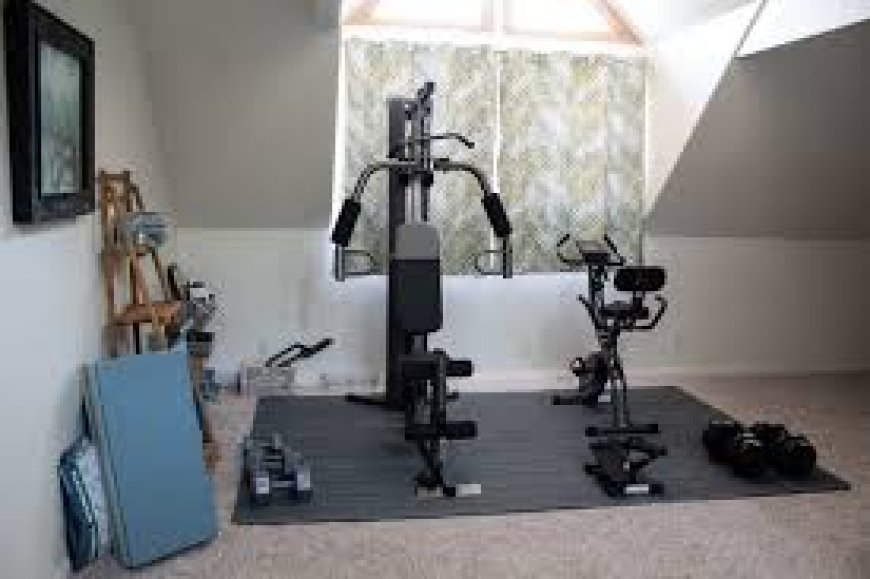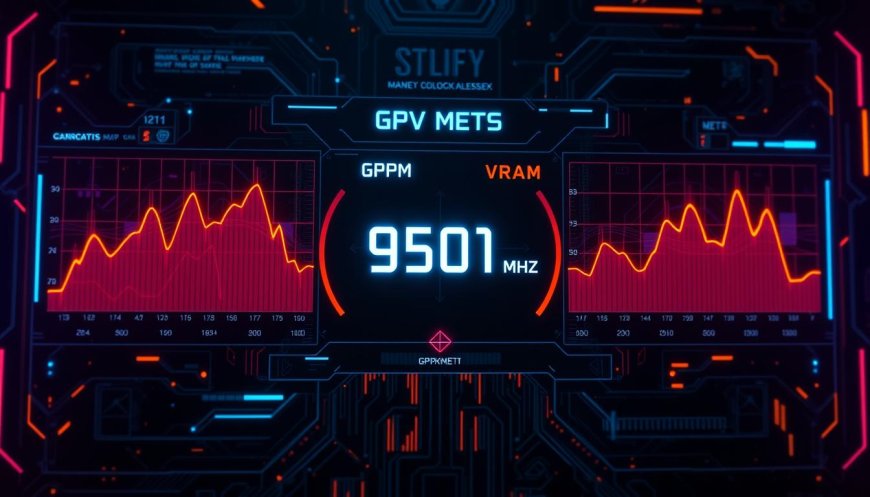nvidia overlay says gpu vram clocked at 9501 mhz
Have you ever seen a weird reading in the NVIDIA overlay on your gaming PC? It shows your graphics card's VRAM clock speed at a very high 9501 MHz. This might make you wonder what it means and if it's a problem.
We'll look into why this VRAM clock speed is so high. We'll talk about what might cause it and how it could affect your system's performance. By the end, you'll know what this reading means and how to fix any issues.
Key Takeaways
- The NVIDIA overlay may occasionally display your GPU's VRAM clock speed as an unusually high 9501 MHz.
- This reading is likely not an accurate reflection of your actual VRAM clock speed and could be the result of software glitches or hardware malfunctions.
- Checking your GPU's temperature, load, and other performance metrics can help identify the root cause of this issue.
- Properly monitoring and maintaining your system's hardware is crucial for ensuring optimal gaming performance.
- Familiarizing yourself with safe overclocking practices and alternative monitoring tools can help you better understand and manage your GPU's performance.
Understanding Nvidia Overlay Monitoring
The NVIDIA overlay is a powerful tool for PC users. It lets you monitor system and GPU metrics in real-time. This tool gives you insights into your gaming rig's performance and health. It helps you optimize your nvidia overlay, gpu performance, and system information.
What is the Nvidia Overlay?
The NVIDIA overlay is a GUI that shows important data like GPU usage, temperatures, and memory speeds. It's a monitoring tool that gives you a detailed view of your system. This helps you spot problems and decide on upgrades or fixes.
Accessing and Customizing the Overlay
Getting to the NVIDIA overlay is easy. Just press Alt+Z while in-game or on your desktop, and it pops up. You can then change what info it shows, adjust the layout, and set alerts for certain performance levels.
Using the NVIDIA overlay, PC fans and gamers can learn a lot about their system's gpu performance. They can tweak settings, solve issues, and improve their computing experience.
Interpreting GPU VRAM Clock Speeds
The GPU VRAM clock speed shows how fast your graphics card's memory moves data. Knowing the usual VRAM clock speed ranges is key. It helps you understand the 9501 MHz speed you've seen.
Modern GPUs usually have memory clock speeds between 5000 MHz and 8000 MHz. This depends on the GPU model and its features. A VRAM clock speed of 9501 MHz, as shown by Nvidia, is much higher than usual.
| GPU Model | Typical VRAM Clock Speed Range (MHz) | Memory Bandwidth (GB/s) |
|---|---|---|
| Nvidia RTX 3080 | 5500 - 6000 | 320 - 370 |
| AMD Radeon RX 6800 XT | 6000 - 6500 | 384 - 512 |
| Nvidia RTX 2080 Ti | 7000 - 7500 | 448 - 616 |
The memory bandwidth is affected by the VRAM clock speed. It plays a big role in how well your GPU works, especially in tasks that need lots of memory. A faster memory clock can mean more bandwidth and better system performance.
https://youtube.com/watch?v=6_Me603fnq8
But, a very high VRAM clock speed, like 9501 MHz, might not always mean better performance. It could also show software problems or hardware issues. We'll look into this more in the next section.
Potential Causes of Abnormal VRAM Clock Readings
If your NVIDIA overlay shows a high VRAM clock speed of 9501 MHz, it's key to know why. This could be due to software problems, hardware issues, or overclocking.
Software Issues and Glitches
Software problems can lead to abnormal vram clock readings. Bugs in NVIDIA drivers or the operating system can cause wrong readings. These software issues might show your GPU's performance as worse than it is.
Hardware Malfunctions and Overclocking
A high VRAM clock speed might also mean a hardware problem. Issues with the GPU or memory can cause this. Overclocking your GPU can also show a higher VRAM clock than usual.
It's important to troubleshoot to find the cause. This could be a software glitch, a hardware issue, or an overclocking problem.
"Identifying and resolving the underlying cause of the abnormal VRAM clock reading is crucial for ensuring the optimal performance and stability of your system."
Troubleshooting Steps for 9501 MHz VRAM Clock
If you see the 9501 MHz VRAM clock speed in your NVIDIA overlay, don't worry. This might be due to a software glitch or a hardware problem. Luckily, there are steps you can take to find and fix the issue.
- Check for software updates: First, make sure your NVIDIA drivers and operating system are current. Old software can cause display problems, like wrong VRAM clock readings.
- Verify VRAM clock speed in other tools: Use tools like GPU-Z or HWMonitor to check the VRAM clock speed. If all tools show the same speed, it might be a hardware problem.
- Inspect for overclocking: If you've overclocked your GPU recently, the VRAM clock speed might be wrong. Try setting your graphics card back to its default settings and see if the problem goes away.
- Check for hardware issues: If the VRAM clock speed is still too high, it could mean a bigger hardware issue. This could be a faulty GPU or memory module. You might need to get help from a professional or replace the parts.
By trying these steps, you can find out why you're seeing the 9501 MHz VRAM clock speed. You can then fix your system's performance optimization and any nvidia overlay issues related to troubleshooting vram clock.
nvidia overlay says gpu vram clocked at 9501 mhz
If you've seen the NVIDIA overlay show a GPU VRAM clock speed of 9501 MHz, you're not alone. This high reading might be due to a software bug, a hardware problem, or an overclock. Let's look into why this VRAM clock speed is so high.
A GPU VRAM clock speed of 9501 MHz is way above what most graphics cards can handle. Most GPUs have VRAM clocks between 4000-8000 MHz. A reading of 9501 MHz is not normal and suggests a problem.
| GPU Model | Typical VRAM Clock Range (MHz) |
|---|---|
| NVIDIA GeForce RTX 3080 | 5000 - 5500 |
| NVIDIA GeForce RTX 2070 Super | 4500 - 5000 |
| NVIDIA GeForce GTX 1660 Ti | 4000 - 4500 |
The nvidia overlay is great for checking your system's performance. But, it's not perfect. Sometimes, software bugs or conflicts can show wrong readings, like a high VRAM clock speed. It could also be a hardware issue, like a bad VRAM module or an unstable overclock.
If you see this, check the NVIDIA overlay's data against other tools. Try some troubleshooting steps to find the problem. Knowing why your GPU's VRAM clock is so high will help fix the issue and keep your system running well.
Impact on Gaming Performance
The GPU VRAM clock speed greatly affects your gaming system's performance. It impacts how smooth your games run and how good they look. If your Nvidia overlay shows a GPU VRAM clocked at 9501 MHz, it's key to know how this might change your gaming.
Framerates and Visual Quality
Higher VRAM clock speeds, like 9501 MHz, can lead to better gaming performance. This means you might see more fps (frames per second). Your system can handle game assets better, making games smoother and more fun.
But, it's vital to check if this speed is real and steady. Unusual or changing memory clock speeds might show software or hardware problems. These can hurt your system's stability and how well it performs.
| Metric | Impact of 9501 MHz VRAM Clock |
|---|---|
| Gaming Performance | Potential increase in FPS and improved visual quality |
| System Stability | Possible issues if clock speed is inaccurate or unstable |
Keep a close eye on your system's performance. Check any odd VRAM clock readings to make sure your games run well and your hardware works right.
Monitoring GPU Temperature and Load
It's important to watch your GPU's temperature and load. These help you see how well your GPU is doing. They can show you if there are any problems and help you make your system better.
The GPU temperature shows how well your graphics card is working. If it gets too hot, it might slow down to cool down. This is called thermal throttling. Watching your GPU's temperature helps you find out if it's too hot, like if a fan isn't working right.
The GPU load shows how hard your graphics card is working. It tells you if games or apps are using too much power. Knowing this helps you find out if your GPU is working too hard and how to make it better.
By watching both GPU temperature and GPU load, you learn a lot about your system. This helps you make it run better and avoid problems.
| Metric | Description | Optimal Range |
|---|---|---|
| GPU Temperature | The temperature of the graphics processing unit (GPU) | Below 80°C (176°F) |
| GPU Load | The percentage of the GPU's processing power being utilized | Below 90% |
Knowing your GPU's temperature and load helps you keep your system running well. It makes sure it's working at its best and avoids damage or problems.
Safe Overclocking Practices
If you've seen an odd VRAM clock speed from overclocking, it's key to know your GPU's limits. Improper overclocking can cause system crashes, performance drops, and even damage your hardware.
Understanding GPU Limits
Before you start gpu overclocking, learn about your graphics card's limits. Each GPU has a safe operating range. Going beyond this can harm its performance and life.
When safe overclocking your GPU, consider these:
- Power Consumption: Overclocking uses more power. Make sure your system's power supply can handle it.
- Thermal Constraints: Higher speeds mean more heat. Good cooling is key to avoid overheating and damage.
- Memory Stability: High VRAM speeds can cause memory errors and crashes. This hurts performance tuning.
Start with small gpu overclocking steps and check system stability. Slowly increase speeds and watch temperatures, power use, and performance. This keeps your system stable and within hardware limitations.
"Responsible gpu overclocking can unlock big performance boosts. But, it's vital to know and respect your hardware's limits."
Alternative Monitoring Tools
The NVIDIA overlay is a handy tool for monitoring your GPU. But, there are many third-party software options that can give you more detailed info. Let's look at some top alternatives and what they offer.
Third-Party Software Options
MSI Afterburner is a well-liked GPU monitoring tool with lots of customization options. It lets you track important system info like GPU temperature, clock speeds, and usage.
HWMonitor is another great choice. It's free and gives detailed info on your computer's hardware, including CPU, GPU, and memory. It's perfect for performance analysis and fixing problems.
If you want a tool that's easy to use and looks good, try NZXT Cam. It shows your system's key stats, like GPU metrics, in a clean interface.
Last but not least, GPU-Z is a specialized GPU monitoring tool that gives you detailed graphics card info. It's great for fixing GPU issues.
These third-party gpu monitoring tools have lots of features. They let you explore your system's performance in depth. This helps you optimize and troubleshoot your system better.
Reporting Issues to Nvidia
If you've tried fixing the VRAM clock speed issue and still have problems, it's time to contact Nvidia. Their support team can help fix the issue and make sure your system works well.
Before you contact Nvidia, gather all the important details about your problem. This includes your system setup, the error you see, and any troubleshooting you've done. Having this info ready helps the support team solve your problem faster.
- Go to the Nvidia support website and find the "Contact Us" section.
- Choose the right support option based on where you are and the issue you have. You might find email, phone, or chat support.
- Describe the problem you're facing, like the nvidia overlay showing a GPU VRAM clock speed of 9501 MHz.
- Share your system details, like your GPU model, driver version, and other relevant hardware or software.
- Tell Nvidia about the troubleshooting steps you've taken and what happened.
- Be patient and quick to respond. Nvidia's team might need more info or time to look into your problem.
By following these steps and giving clear, detailed info, you're more likely to get good nvidia support. The Nvidia team is ready to help with thorough troubleshooting assistance and find a solution for you.
Success in reporting issues comes from paying attention to details and clear communication. Working with Nvidia's support team ensures your system runs smoothly and you can enjoy gaming without problems.
Conclusion
The NVIDIA overlay showing a VRAM clock speed of 9501 MHz can come from many sources. These include software problems, hardware issues, or overclocking. By looking into these causes, you can fix the problem and make your system run better.
Key points from this guide are to keep an eye on the NVIDIA overlay. Also, know your GPU's limits and use other tools to check performance. With the right steps, your NVIDIA device will work great.
Being careful and taking action can improve your GPU's VRAM clock speed. This will make your gaming on NVIDIA systems better and smoother. See the NVIDIA overlay as a helpful tool for better gaming. Start your journey to better gaming now.
The NVIDIA overlay is a built-in feature. It lets users monitor system and GPU metrics in real-time. This includes GPU utilization, temperatures, and memory clock speeds.
Access the NVIDIA overlay by pressing Alt+Z while in-game. Or, use the NVIDIA GeForce Experience application. You can then customize what info is shown and how the overlay looks.
Modern GPUs usually have VRAM clock speeds between 5000-8000 MHz. A speed of 9501 MHz is unusually high.
An abnormal VRAM clock reading can be due to software glitches, hardware malfunctions, or aggressive overclocking.
To fix the 9501 MHz VRAM clock issue, restart your system. Update your GPU drivers. Check for hardware malfunctions. Also, check if overclocking settings are applied.
The VRAM clock speed greatly affects gaming performance. It impacts framerates and visual quality. A high speed like 9501 MHz might indicate a problem.
Monitor your GPU's temperature and load too. This ensures your system is safe and running well.
When overclocking, know your hardware's limits. Follow safe practices to avoid damage. This includes increasing clock speeds slowly, watching temperatures, and stress-testing.
Besides the NVIDIA overlay, tools like MSI Afterburner, EVGA Precision X1, and HWMonitor offer detailed GPU performance info.
If you can't fix the VRAM clock speed issue, report it to NVIDIA's support. Provide system info and a detailed problem description to help them troubleshoot.
FAQ
What is the Nvidia Overlay?
How can I access and customize the Nvidia Overlay?
What does a typical GPU VRAM clock speed range look like?
What are the potential causes of an abnormal VRAM clock reading of 9501 MHz?
What troubleshooting steps can I take to address the 9501 MHz VRAM clock issue?
How can the VRAM clock speed impact gaming performance?
What other metrics should I monitor alongside the VRAM clock speed?
What are some safe overclocking practices I should follow?
What are some alternative GPU monitoring tools I can use?
How can I report issues with the Nvidia Overlay to the company?
What's Your Reaction?





































